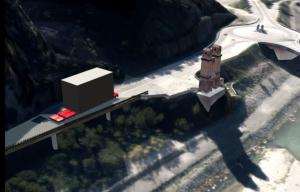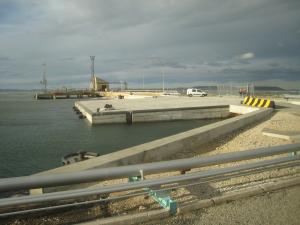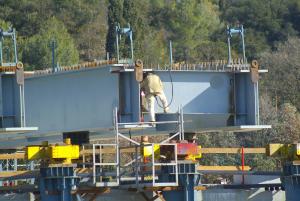Last leg of a long journey
3 Dec 2010
-
Robert Arnoux
An artist's impression of one of the large-component convoys passing through the Pont de Mirabeau gorge.
A year and a half from now, the first ITER components will arrive at Marseille's industrial harbour in Fos-sur-Mer. However, this will not be the end of the voyage: upon arrival at Fos, the components will be loaded onto barges, ferried across the small inland sea of Étang-de-Berre, and eventually transferred to special self-propelled flatbed transport vehicles that will deliver them to the ITER site.
The last leg of the trip is 104 kilometres long. Known as the "ITER Itinerary," it bypasses 16 villages, crosses two thruways (A7 and A51), follows part of the Durance riverbed and ends on the ITER platform, where the machine will be assembled.
Completing the roadwork has required three years of work and an investment of EUR 110 million, EUR 72 million coming from the local government of Bouches-du-Rhône, the rest from the French State.
The Itinerary is now ready to accommodate the 200 "large component convoys" that are anticipated, among which the nine 870-tonne packages of the vacuum vessel sectors; the "smallest" of the poloidal field coils (displacement: 9.1 metres) and the four 47-metre-long beams of the bridge crane that will be used to assemble the machine.
"We have managed to stick to our schedule," says Nadia Fabre, the French engineer in charge of the ITER Itinerary. "We will be able to organize the first of a series of three test convoys in June 2011, earlier than we had anticipated."
The first "actual convoy" that will deliver the first bridge crane beam is scheduled for mid-2012. Like all subsequent transports, it will travel at night, at the speed of a walking man (5 km/h) and in some cases that of a cyclist (30 km/h).
Roadwork on the ITER Itinerary has provided some 300,000 work hours to 30 local companies and 70 contractors.
The ITER Organization has recently launched an international tender for the sea and road transportation of the components, the results of which will be known by February.
Roadwork on the ITER Itinerary has provided some 300,000 work hours to 30 local companies and 70 contractors.
An essential tool for the ITER Project, the Itinerary also created an opportunity to modernize the local road system and make it safer for all users.




